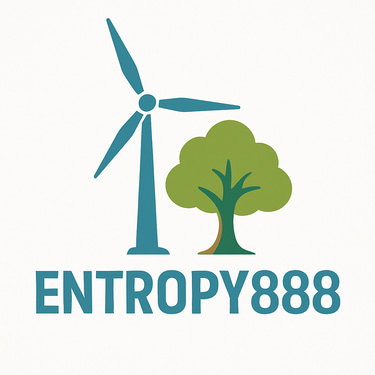Reusing Mining Heat: How Bitcoin Farms Can Power Greenhouses and Communities
In traditional industries, waste heat is exactly that — waste. But in Bitcoin mining, it can become one of the most valuable byproducts. As the industry evolves toward sustainability, miners are learning that the heat their machines generate isn’t a problem to eliminate — it’s an opportunity to reuse. In 2025–2026, that realization is transforming Bitcoin mining into a source of warmth, growth, and local resilience.
MINING TECHNOLOGY & EFFICIENCY
Chris Boubalos
10/30/2025
1. The Untapped Power of Heat
Every ASIC is an energy converter: it turns electricity into computing power — and nearly all of it into heat.
A 1 MW mining farm produces enough thermal energy to heat:
300 homes, or
10,000 m² of greenhouses, or
A small district heating loop.
Instead of venting that energy into the air, forward-thinking miners are redirecting it to agriculture, communities, and circular energy systems.
2. How Heat Reuse Works
Through hydro or immersion cooling, mining rigs release heat into a liquid that can easily be transported and repurposed.
The heat is then:
Pumped into water-to-air exchangers for building heating.
Used to warm greenhouses, boosting crop growth in cold seasons.
Integrated into industrial or municipal systems that need steady low-grade heat.
This turns Bitcoin mining farms into co-generative energy hubs — producing both computation and warmth.
3. Benefits for Communities
🌡️ Heating Infrastructure
Mining-based heat recovery systems can replace or supplement natural gas in local heating networks.
🌿 Agricultural Growth
Farmers can extend growing seasons, reduce energy costs, and even pair solar-powered mining with greenhouse heating — creating fully closed-loop systems.
🌎 Carbon Reduction
By using mining heat instead of burning fuels, CO₂ emissions drop significantly — making mining carbon positive, not just neutral.
4. Global Examples
Sweden & Finland: Mining farms feed heat into district systems, replacing fossil heating.
Canada: Greenhouses use ASIC heat to grow vegetables through harsh winters.
Netherlands: Pilot projects combine solar panels, Bitcoin miners, and hydroponic systems in complete energy loops.
These aren’t prototypes — they’re functioning proofs that mining heat = renewable resource.
5. The Economics of Heat Reuse
Instead of spending money on cooling, miners can now earn from it:
ApplicationAdded Revenue / SavingsImpactGreenhouse integration10–20% extra ROICrop yield increaseBuilding heatingUp to 30% energy savingsLower OPEXDistrict energy salesRecurring incomePublic-private synergy
By monetizing heat, miners lower payback times, stabilize ROI, and strengthen their ESG credentials — a key factor for future investors.
6. The Entropy888 Approach
Entropy888 designs containerized mining systems that make heat reuse simple:
Dual-loop immersion cooling captures and transfers heat efficiently.
Modular connectors link to nearby agricultural or residential networks.
AI systems monitor heat flow to balance temperature and output.
Our goal: every joule of energy used in mining should have a second life.
When one watt generates Bitcoin and warms a greenhouse, mining becomes not extraction — but regeneration.
7. A Vision for Regenerative Infrastructure
Imagine rural areas where:
Hydroelectric plants power miners.
Miners heat local farms.
Profits fund reforestation.
That’s the regenerative economy we’re building — where energy creates not just wealth, but warmth, food, and sustainability.
Conclusion
Bitcoin mining has always been about converting energy into value.
Now, it’s about multiplying that value.
By reusing mining heat for communities and agriculture, miners turn what was once “waste” into an engine of regeneration.
At Entropy888, we believe that energy should never end — it should flow, transform, and give life.
Contact
© 2025 Entropy888. All rights reserved.
Powered by Renewable Energy.
Christos Boubalos - Business Development Lead +306972 885885 mob/whatsapp
christos@entropy888.com
-------------------------------------------
General Enquiries - info@entropy888.com
